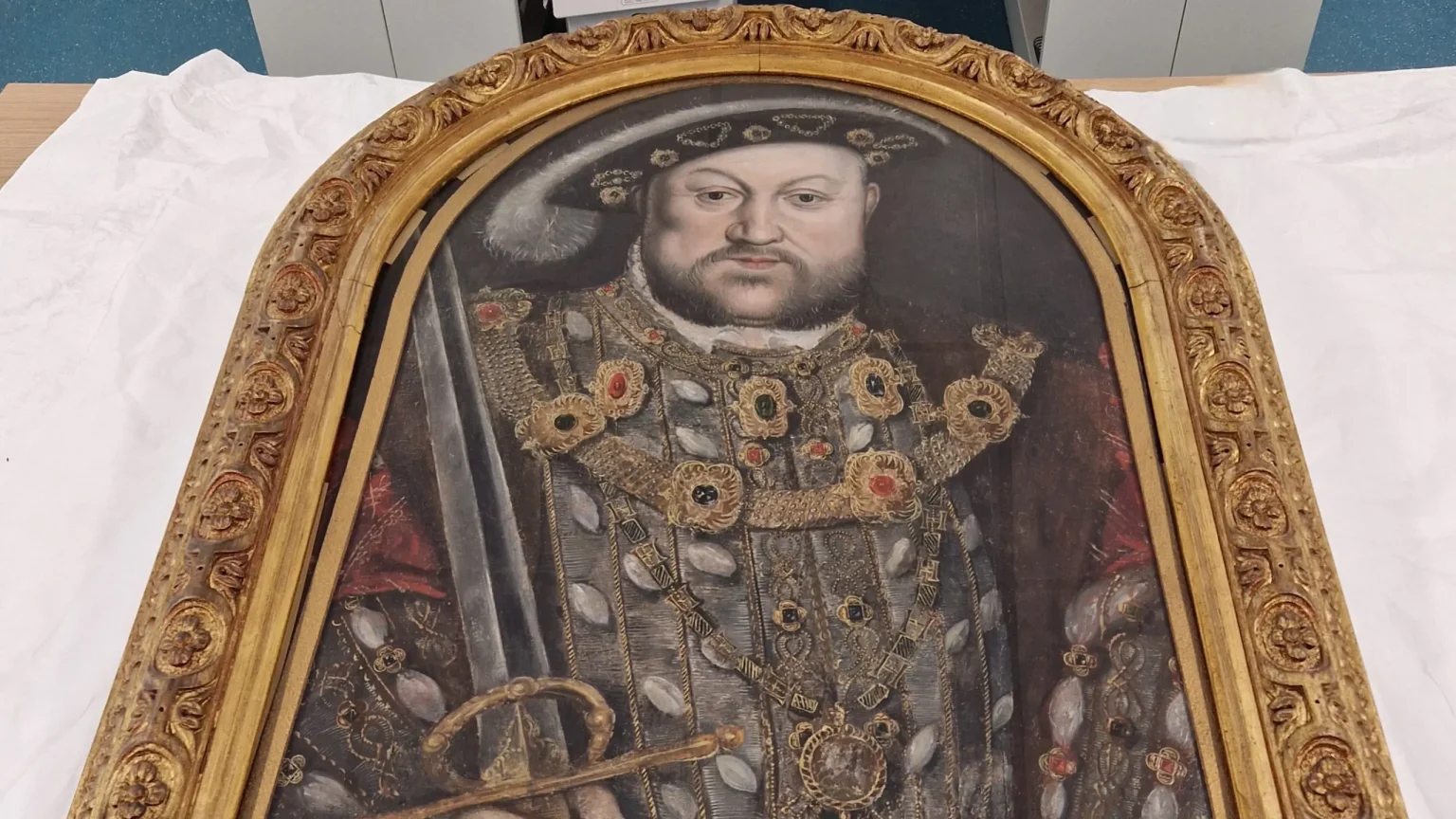Art historian Adam Busiakiewicz made a miraculous discovery when he spotted a painting of King Henry VIII in a corner of a room at Warwick, England’s Shire Hall while scrolling through photos. The painting was part of a famous set commissioned by Ralph Sheldon in the 1590s, with only a few remaining pieces known to exist today. After conducting research on Sheldon’s paintings, Busiakiewicz confirmed that the painting of Henry VIII was part of the missing set, which added to the mystery of how it ended up at Shire Hall. The movement of art can be challenging to trace, but evidence such as the frame and an inscription on the painting supports its authenticity.
The painting of Henry VIII has a deep historical significance due to its centuries-old origins, its connection to the famous set commissioned by Sheldon, and the identifiable figure of King Henry VIII as its subject. The artist who created a painting, the quality of the artwork, and its provenance are all factors that contribute to its value. Busiakiewicz emphasized the importance of considering these factors when determining the worth of a painting, as the value can vary depending on the interest of potential buyers at auctions. The discovery of this ancient portrait has added to its value and importance due to its historical significance and the mystery surrounding its journey to Warwick’s Shire Hall.
The origins of the painting of King Henry VIII can be traced back to the 1590s when it was part of a set commissioned by Ralph Sheldon. Only a few of the original 22 portraits from the set are still known to exist, with others found in institutions such as the National Portrait Gallery in London and Knebworth House. The discovery of the long-lost painting of Henry VIII has raised questions about its journey to Warwick’s Shire Hall, with evidence pointing to its sale at Christie’s in London in 1908 as part of the property belonging to the Marchioness of Conyngham. Busiakiewicz is currently working to fill in the gaps in the painting’s history to uncover how it ended up in Warwick.
The movement of art can be difficult to trace, especially when records are not kept or details are lost between owners. Busiakiewicz noted the importance of documenting the history of artworks to preserve their significance and value. The discovery of the ancient portrait of Henry VIII at Warwick’s Shire Hall is a testament to the importance of unraveling the mysteries behind a painting’s provenance and origin. The value of a painting can soar at auctions when there is interest from multiple potential buyers, making the determination of its worth a mysterious science that can lead to unexpected outcomes.
In conclusion, the discovery of the long-lost portrait of King Henry VIII at Warwick’s Shire Hall by art historian Adam Busiakiewicz sheds light on the importance of tracing the origins and provenance of artworks to uncover their historical significance. The mysterious journey of the painting from the 1590s to its appearance in Warwick presents an intriguing puzzle that Busiakiewicz is working to solve. The value of a painting can be determined by various factors, including the artist who created it, the quality of the artwork, and its historical importance. The discovery of the ancient portrait adds to its value and significance, making it a noteworthy addition to the world of art history.













